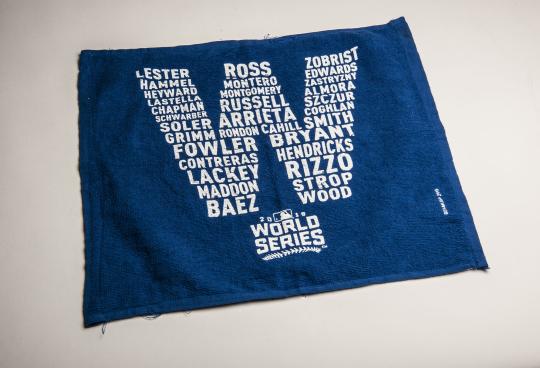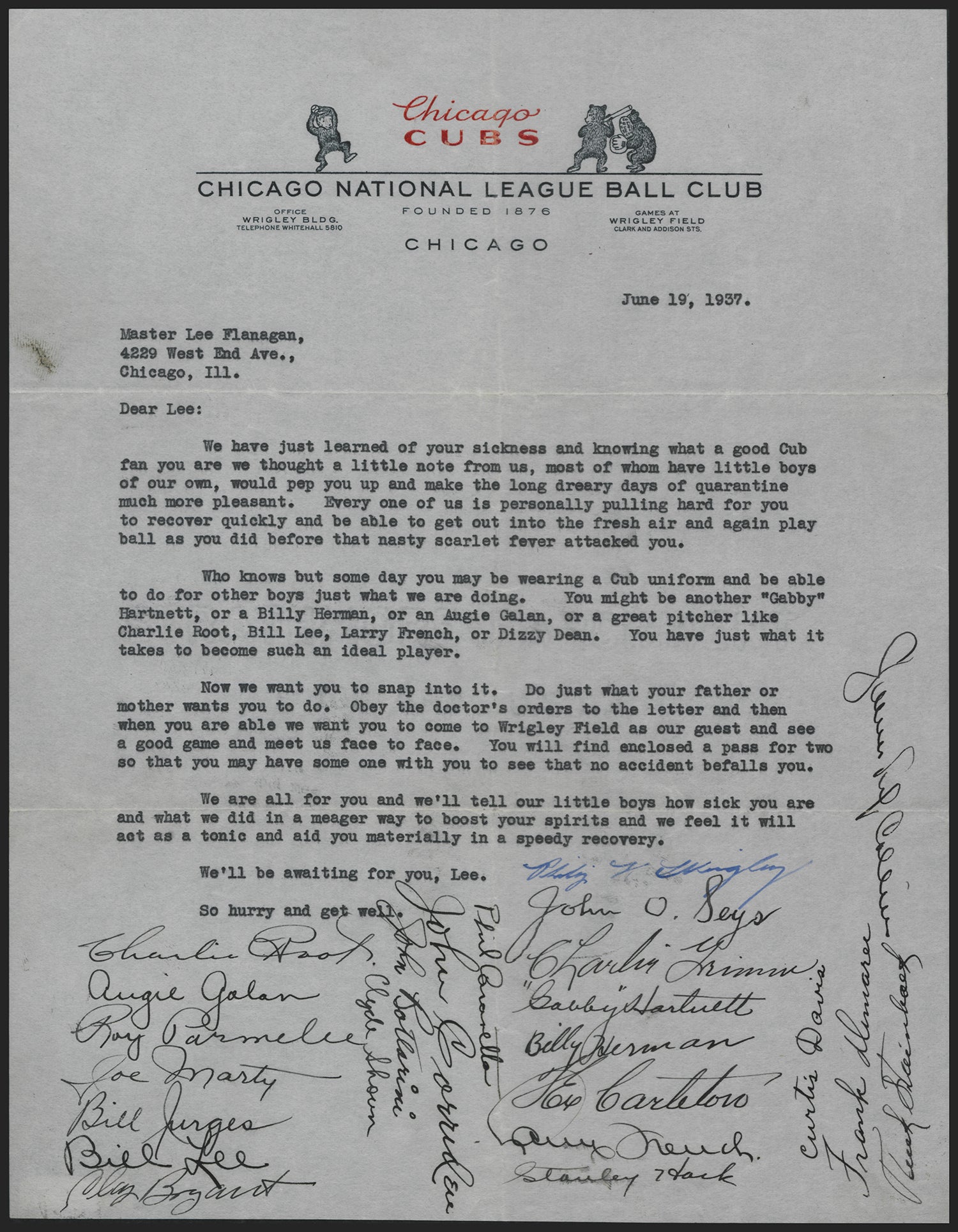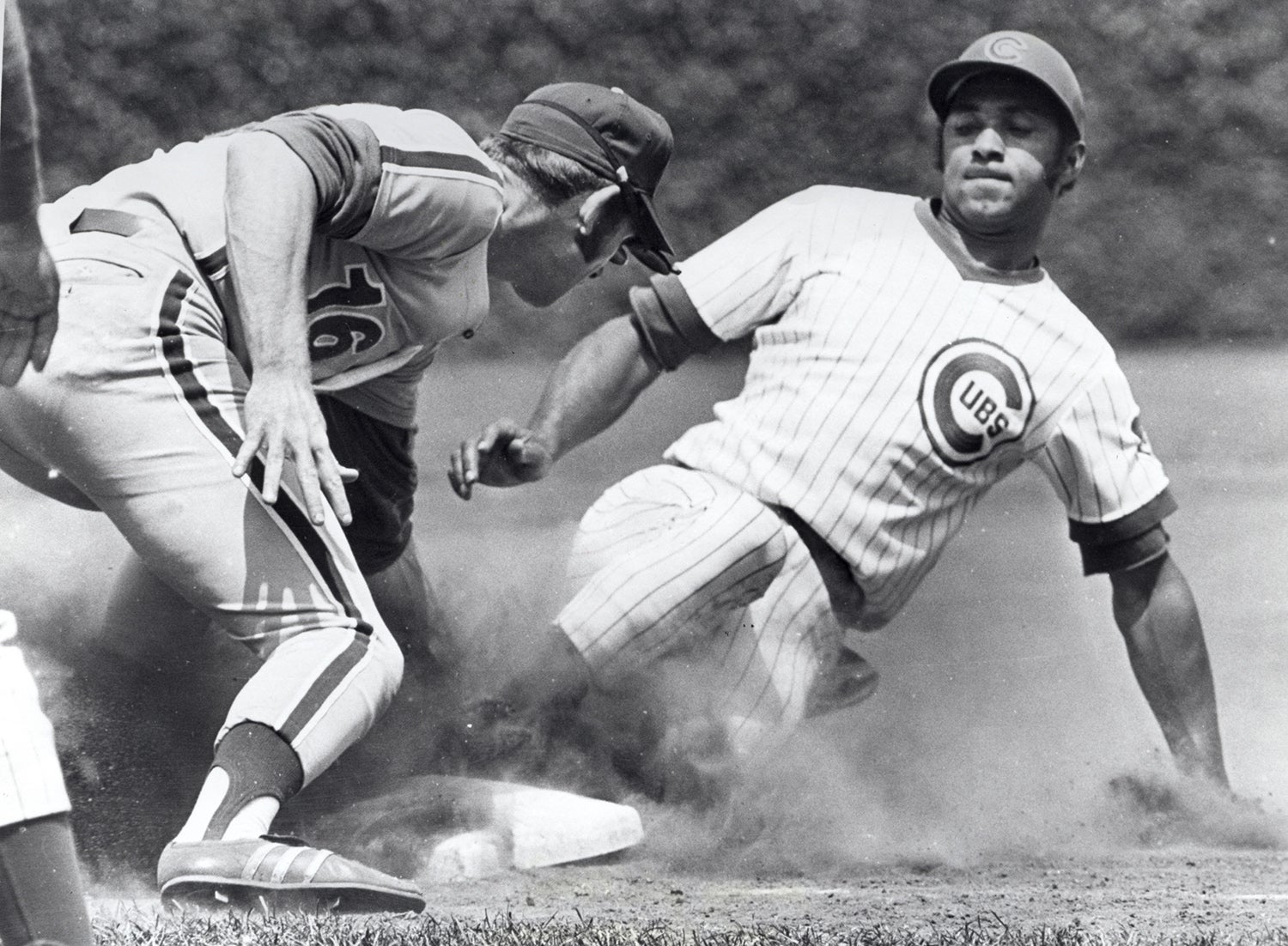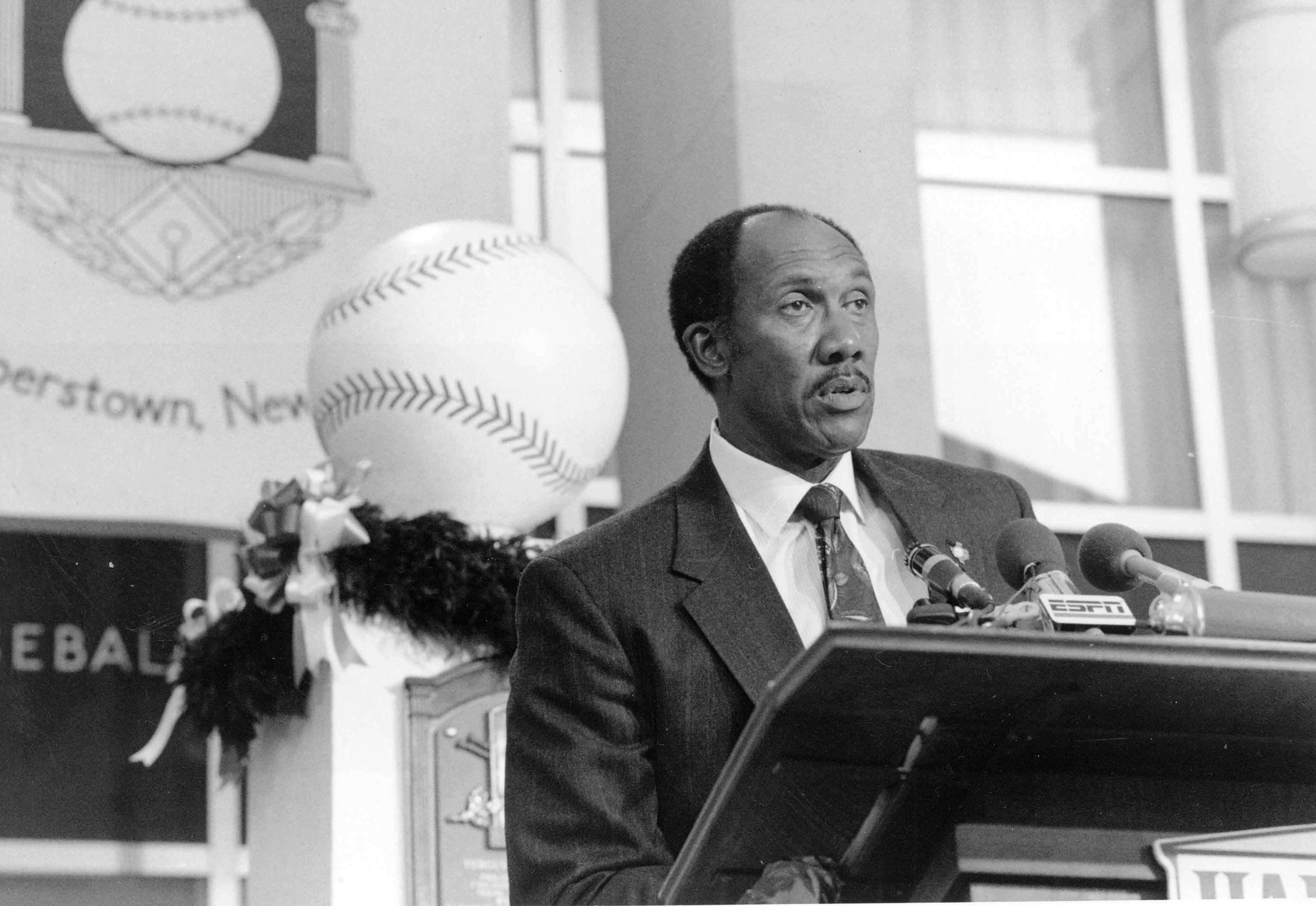- Home
- Our Stories
- #Shortstops: Fly the W
#Shortstops: Fly the W
The 2016 World Series between the Cleveland Indians and the Chicago Cubs is one that certainly will not be forgotten by baseball fans, most notably Cub fans, anytime soon. It’s especially noteworthy because the Cubs hadn’t won a World Series since 1908.
For Cubs fans, the flying of the W flag after a win is a tradition, stemming from the 1930s. But how did the tradition of “flying the W” start?
Hall of Fame Membership
There is no simpler, and more essential, way to demonstrate your support than to sign on as a Museum Member.
When the Wrigley family bought Catalina Island in California, it came with the Wilmington Transport Company. The ships ferried fans and players to the team’s Spring Training facility on Catalina Island. The company’s ships would bear a blue flag with a white “W”.
After the team constructed new bleachers, a hand-operated scoreboard and the recognizable ivy in the 1930s, the “W” flag became a staple icon. The actual date of the first flying of the flag at Wrigley is not known; as there were many changes happening to the park between 1937 and 1938, a new flag apparently never warranted a mention.
The scoreboard operators would raise a “W” flag for the Cubs wins and an “L” flag for the team’s losses. It was an easy sign for neighbors or elevated-train riders on their way home to know the outcome of the Cubs game. If you came by the field at night and the green light was turned on the left field side, it was a win, a red light on the right field sign was a loss.
The flag, however, has become an everyday flag now. However, there are some good-humored rules associated with flying the W. Do not ever fly it early, if you fly the flag prematurely and the Cubs lose the game you will be met with the ire of superstitious Cubbie fans. And there are some more interesting rules as well like, do not post it on your wall, permanently, at your office for fear of angering White Sox fans or confusing Cubs fans who have not watched that day’s game.
The colors of the flags remained the same until the 1980s when the club began to retire numbers of legends who had starred for the Cubs, like Ernie Banks and Billy Williams. Once the flags became fixtures atop the foul poles at The Friendly Confines, the “W” flag was changed to a white banner with a blue letter.
Thus the current flag and the rally symbol for the 2016 Chicago Cubs came into being.
Meaghann Campbell was the 2018 library-technical services intern in the Hall of Fame’s Frank and Peggy Steele Internship Program for Youth Leadership Development





